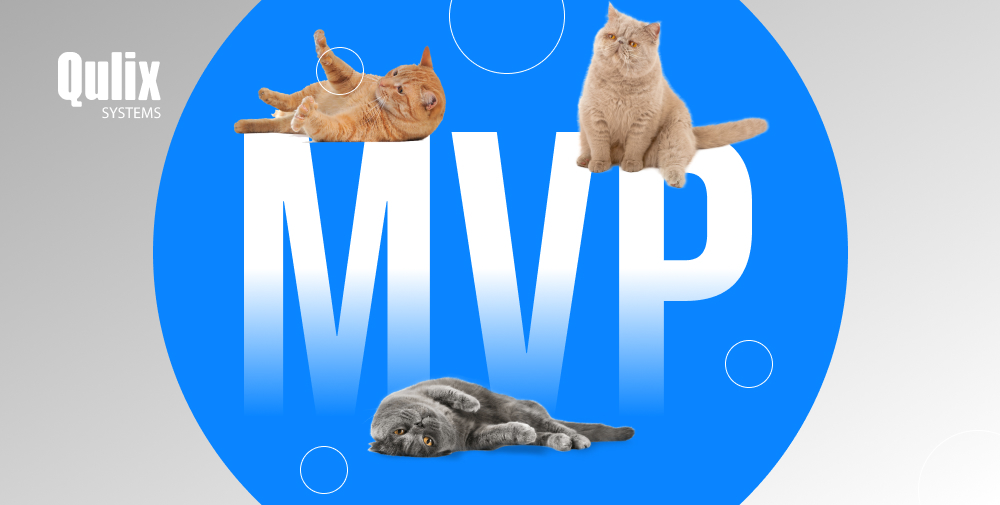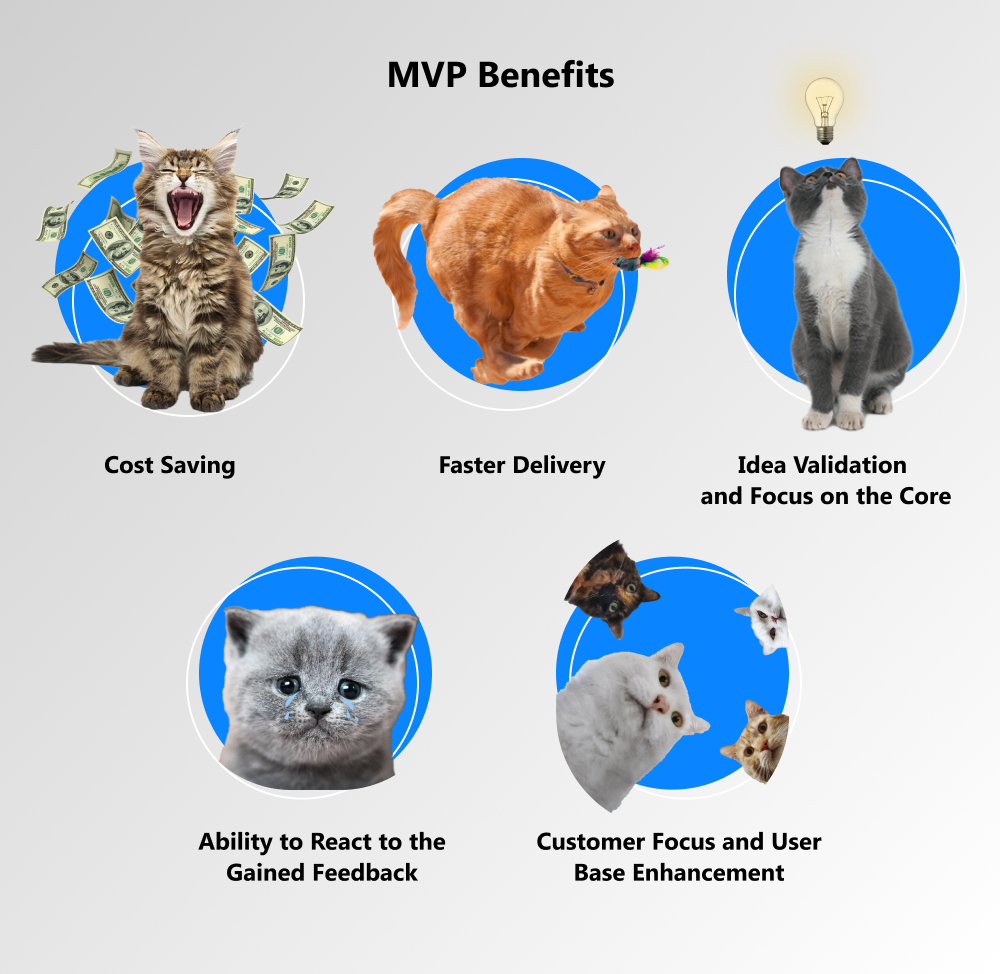With the number of mobile apps increasing daily and the development process becoming more and more demanding due to the rising competition, it has become especially important to make sure that the product you are going to build is something target users want and are ready to pay for. This, in turn, can be only done by putting the product directly in the future users’ hands and getting user feedback on whether they like it and on what needs to be improved. This is where an MVP app comes into play, letting businesses test the market before spending the fortune on developing something unavailing, while also receiving a return on their investment from the early stage of the mobile app development.
written by:
Aliaksandra Tsikhanovich
With the number of mobile apps increasing daily and the development process becoming more and more demanding due to the rising competition, it has become especially important to make sure that the product you are going to build is something target users want and are ready to pay for. This, in turn, can be only done by putting the product directly in the future users’ hands and getting user feedback on whether they like it and on what needs to be improved. This is where an MVP app comes into play, letting businesses test the market before spending the fortune on developing something unavailing, while also receiving a return on their investment from the early stage of the mobile app development.
According to Statista, approximately 25% of all mobile apps get abandoned after being used only once. For businesses in general, this means wasted time and money, efforts, and other expensive resources; for startups, it often means termination. Moreover, in the modern competitive environment, the speed at which new product is released and at which real user feedback is collected is crucial for the application to gain popularity and become a success.
Unfortunately, it is nearly impossible to be sure if the project is going to succeed until a user gets a chance to interact with the product. This is the reason why the MVP concept has become quite popular in recent years, as it helps to get rid of the extreme uncertainty while contributing to better user understanding and providing a faster and cheaper way to test its features. In fact, many of the widely used applications such as Spotify, Airbnb, Twitter, Amazon, and others initially used the MVP approach and only later became the fully-fledged applications we experience today.
The Minimal Viable Product, or MVP, is the smallest and simplest product that can be launched and offered to early users, with just enough features to provide value, validate the product idea and gain feedback. The term has gained its popularity after being introduced as part of Eric Ries’ lean startup methodology and being defined as “the version of a new product that allows a team to collect the maximum amount of validated learning about customers with the least amount of effort”. If we were to break down the term and look at each of its components, we could define them as follows:
[M]inimum: Creating the product of the highest possible value with the minimum effort put into it and the minimum work done. The minimal approach refers to breaking down the product ideas into more simple and lean ones.
[V]iable: Even though the functionality of the product needs to be kept minimal, it still has to be able to function without failing, bring value to the users, and compete against rivals.
[P]roduct: This is the actual complete creation that answers to the previous two concepts, while, importantly, it is also ready for use already today.
However, while MVP only has a minimum feature set, it is essential not to confuse it with an application draft, wireframes, or a prototype. The MVP refers to a complete fully-functioning application focused on the most valuable features at first and continuously evolving with future iterations based on the collected user feedback and analysis. In simple words, it gets tested by the users themselves. Furthermore, such an app needs to not only be complete but also of high quality, as it still needs to compete on the market and its quality is a trade-off no business can afford.
Why Companies Need MVPs
First and foremost, MVP apps are used for testing the waters — validating whether the idea is worth any further investment. Businesses get the chance to adjust their product according to what the targeted audience have demand for, letting people show what they want instead of guessing it. The MVP concept of app creation provides companies with the flexibility to make these adjustments before the product has been scaled up and resources have been wasted for nothing. Moreover, it also allows them to have immediate benefits, start earning before being done spending.
For many small companies and startups MVP strategy may be a lifeline, reducing risks, costs, and time that they cannot afford to waste. Meanwhile, for bigger companies that have the budget for building an evolved application from the very start, it is still about the idea validation and thoughtful future development planning.
Adopting the Minimal Viable Product approach lets businesses win on many levels, some of the main benefits include:
1. Cost Saving
Prioritization of the must-have features helps to reduce the size of the initial investment as well as the mobile app development time. The MVP process allows companies to release a product that keeps customers engaged without having to make a big financial commitment at first. Instead, after the feedback has been gathered and market needs have been defined, it is possible to invest funds in a more intelligent and targeted manner. Moreover, making the product supplier at first, makes it cheaper to adjust and advance it later.
2. Faster Delivery
The speed at which businesses can move from having a vision of their product to releasing it for public consumption is one of the major reasons to start with MVP development. Gaining profits happens before the product is fully developed. Furthermore, due to the agility of the initial product, there is less time spent on bug fixes and new features can be released quicker as well.
3. Idea Validation and Focus on the Core
Even when initial market research is done accurately, there is still no 100% guarantee that the idea will be successful among users. For this reason, validating that the product has merit is a smart move before committing to its utter development. Moreover, focus on the core value of the project and real audience feedback helps to not only have an efficient development process, but also guarantees a clearer vision, fewer distractions on unnecessary features, and, thus, a better reputation from the very start.
4. Ability to React to the Gained Feedback
As repeatedly mentioned, the necessary adjustments and improvements to the product are easily attainable due to the minimal approach of the MVP strategy. There is a lot of flexibility for constant updates and experimentations based on the continuous assessments of the user’s activity and app performance; more freedom to create something that will be actually needed and appreciated by the users and, thus, bring more profits. It also allows companies to stay more competitive, as they are always keeping their product up-to-date. Lastly, in case of the necessity to change the business direction, which is never a pleasant point, the transition will be less painful.
5. Customer Focus and User Base Enhancement
The ability to capture customer feedback frequently and from such an early stage is an advantage on its own. Collected insights, while challenging the initial product assumptions, help to develop a final application that would not fail in a short time and most probably be much more profitable as it meets exact final user needs. Moreover, the Minimal Viable Product allows building the user base from an early stage as well, while also gives a better understanding of the target audience to approach based on who early adopters are.
While the MVP seems to be quite a simple concept, there are still certain challenges that companies face when trying to implement it:
1. Correctly Defining MVP
Defining the minimum — core functions and purposes — is not as easy as it may sound. In fact, it is often the biggest challenge companies face, as there is always a desire to add more features and to make the application look nicer. Meanwhile, if the scope is too small, the product might not be presented correctly, while in the case of the scope getting too big, the whole point of building an MVP application gets defeated. It is important to bear in mind that the product needs to deliver value, but also be simple enough to take advantage of and learn from the early received feedback.
2. Choosing the Right Technology Stack
As the whole idea lays in the ability to adjust and scale up the project after collecting needed feedback, it is important to use the architecture that would be a solid basis for future improvements and not cause too many complications. Properly chosen technology for the app development helps to make future maintenance and modifications easier and cheaper.
3. Perfectionism
Keeping a minimal approach means resisting the temptation to spend too much time on polishing some unnecessary aspects of the software or on adding attractiveness to the design of the application. It is essential to find a balance between maintaining the quality and not overdoing the esthetics.
4. Competition
The product gets exposed to the public while still not being fully developed. Even though there is still the advantage of being the first to adopt and the first to get priceless feedback and implement further improvements, the initial idea has been exposed and the competition may get tougher.
One Last Point
The important point to remember when building a Minimum Viable Product app is that it is not a draft or a prototype, but an actual app that will be released to the public. Thus, the focus should go beyond product development and things that don’t scale, such as marketing, should be kept in mind.
Furthermore, as the whole idea of an MVP is based on collecting feedback and then adjusting the product accordingly, there needs to be built a mechanism that would allow capturing all user interactions, measuring feedback, and proper analysis of all the collected data. Product performance measurement can be based on quantitative data such as the number of sign-ups and downloads, application traffic, application usage metrics, and other KPIs, as well as on the qualitative feedback received from questionnaires, user interviews, and other unstructured assessments. Leveraging maximum information from the collected data to build up the final application from the MVP one is the key.
If you are looking for an app development company to launch your MVP project, Qulix Systems may be the right choice for you. Contact us or visit the website for more information.

Contacts
Feel free to get in touch with us! Use this contact form for an ASAP response.
Call us at +44 151 528 8015
E-mail us at request@qulix.com









